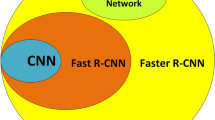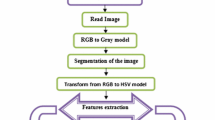Abstract
String insulators are components in high-voltage towers responsible for preventing energy dissipation through the tower structure; that is, they are responsible for isolating the high voltage in the electrical network cables. These string insulators must be clean for best performance and to avoid malfunctions. Verifying the necessity for cleaning/washing is most often performed by human visual observation, which can lead to interpretation errors, in addition to bringing risks to the physical integrity of humans in the vicinity of these electrical systems. Thus, this paper aims to develop an algorithm to detect and classify these insulators. The proposed algorithm uses artificial intelligence techniques and analyzes the image, inferring the state of cleanliness of the analyzed insulator. For the development of this algorithm, it was necessary to build a synthetic database using CAD software such as Inventor and Unity-3D due to image limitations available from dirty insulator strings. In this paper, two distinct neural networks are built using supervised learning techniques, where the first one is for detecting the chain of insulators, and the second is for detecting the type of dirt on the disk surface. In the first stage, techniques that use supervised learning are studied, more aimed explicitly at semantic segmentation networks, and in the second stage, classification deep neural networks were used to detect the type of impurities. In detecting insulator strings, an average dice coefficient of 0.95 was achieved for simulated images and 0.92 for natural images, with learning parameters based on a database with only simulated images. The average accuracy obtained in the dirt classification stage was 0.98.









Similar content being viewed by others
Data availability
The dataset for segmenting the insulator strings and classifying the insulator dirty is available for download at IEEE DataPort (http://ieee-dataport.org/12851). The software used in this paper is also available on GitHub (https://github.com/hericlesferraz/auto-insulabelling).
References
Abdollahi, A., Pradhan, B., Shukla, N., Chakraborty, S., Alamri, A.: Deep learning approaches applied to remote sensing datasets for road extraction: A state-of-the-art review. Remote Sens. 12(9), 1444 (2020)
Akyel, C., Arıcı, N.: Linknet-b7: Noise removal and lesion segmentation in images of skin cancer. Mathematics 10(5), 736 (2022)
Alahyari, A., Hinneck, A., Tariverdi, R., Pozo, D.: Segmentation and defect classification of the power line insulators: A deep learning-based approach. CoRR ar**v:abs/2009.10163 (2020)
Chaurasia, A., Culurciello, E.: Linknet: Exploiting encoder representations for efficient semantic segmentation. CoRR ar**v:abs/1707.03718 (2017)
El Haj, Y., Milman, R., Kaplan, I., Ashasi-Sorkhabi, A.: Hybrid algorithm based on machine learning and deep learning to identify ceramic insulators and detect physical damages. In: 2021 IEEE Conference on Electrical Insulation and Dielectric Phenomena (CEIDP), pp. 235–238. IEEE (2021)
Géron, A.: Hands-on machine learning with Scikit-Learn, Keras, and TensorFlow. O’Reilly Media Inc, Berlin (2022)
Gonçalves, R.S., Agostini, G.S., Bianchi, R.A., Homma, R.Z., Sudbrack, D.E.T., Trautmann, P.V., Clasen, B.C.: Inspection of power line insulators: State of the art, challenges, and open issues. Handbook of Research on New Investigations in Artificial Life, AI, and Machine Learning, 462–491(2022)
Gonçalves, R.S., Carvalho, J.C.M.: Review and latest trends in mobile robots used on power transmission lines. Int. J. Adv. Rob. Syst. 10(12), 408 (2013)
Goncalves, R.S., Carvalho, J.C.M.: A mobile robot to be applied in high-voltage power lines. J. Braz. Soc. Mech. Sci. Eng. 37, 349–359 (2015)
Gonçalves, R.S., Souza, F.C., Homma, R.Z., Sudbrack, D.E.T., Trautmann, P.V., Clasen, B.C.: Robots for inspection and maintenance of power transmission lines. In: Robot design: from theory to service applications, pp. 119–142. Springer, Berlin (2022)
He, K., Zhang, X., Ren, S., Sun, J.: Deep residual learning for image recognition. In: Proceedings of the IEEE Conference on Computer Vision and Pattern Recognition, pp. 770–778 (2016)
Hossin, M., Sulaiman, M.N.: A review on evaluation metrics for data classification evaluations. Int. J. Data Min. Knowl. Manag. Process. 5(2), 1 (2015)
Kulkarni, D.L.P.: Insulator defect detection https://doi.org/10.21227/vkdw-x769 (2021)
LeCun, Y., Bengio, Y., Hinton, G.: Deep learning. Nature 521(7553), 436–444 (2015)
Lopez Lopez, R., Batista Sanchez, M.J., Perez Jimenez, M., Arrue, B.C., Ollero, A.: Autonomous uav system for cleaning insulators in power line inspection and maintenance. Sensors (2021). https://doi.org/10.3390/s21248488
Mahouin, A., Gonçalves, R.S.: Design of a robot applied to inspection of power transmission lines. In: Applied Mechanics and Materials, vol. 590, pp. 551–555. Trans Tech Publ (2014)
Peng, B., Tan, W., Li, Z., Zhang, S., **e, D., Pu, S.: Extreme network compression via filter group approximation. In: Proceedings of the European Conference on Computer Vision (ECCV), pp. 300–316 (2018)
Pernebayeva, D., Irmanova, A., Sadykova, D., Bagheri, M., James, A.: High voltage outdoor insulator surface condition evaluation using aerial insulator images. High Volt. 4(3), 178–185 (2019)
Reis, C.M.d.M.: Verificação laboratorial da influência da chuva no comportamento dielétrico de isoladores mt. PhD thesis, Instituto Superior de Engenharia do Porto - Portugal (2017)
Ronneberger, O., Fischer, P., Brox, T.: U-Net: Convolutional Networks for Biomedical Image Segmentation. ar**v. https://doi.org/10.48550/ARXIV.1505.04597 (2015)
Sampedro, C., Rodriguez-Vazquez, J., Rodriguez-Ramos, A., Carrio, A., Campoy, P.: Deep learning-based system for automatic recognition and diagnosis of electrical insulator strings. IEEE Access 7, 101283–101308 (2019). https://doi.org/10.1109/ACCESS.2019.2931144
Simonyan, K., Zisserman, A.: Very deep convolutional networks for large-scale image recognition. ar**v preprint ar**v:1409.1556 (2014)
Tao, X., Zhang, D., Wang, Z., Liu, X., Zhang, H., Xu, D.: Detection of power line insulator defects using aerial images analyzed with convolutional neural networks. IEEE Trans. Syst. Man Cybern. Syst. 50(4), 1486–1498 (2018)
Wan, W.M.A.H.B., Nordin, S., et al.: Plant recognition system using convolutional neural network. In: IOP Conference Series: Earth and Environmental Science, vol. 1019, p. 012031. IOP Publishing (2022)
Zhang, J., Karimireddy, S.P., Veit, A., Kim, S., Reddi, S.J., Kumar, S., Sra, S.: Why adam beats sgd for attention models (2019)
Acknowledgements
The authors would like to thank Centrais Elétricas de Santa Catarina (CELESC P &D Program), The Brazilian Electricity Regulatory Agency (Agência Nacional de Energia Elétrica – ANEEL), and Brazilian National Council for Scientific and Technological Development (Conselho Nacional de Desenvolvimento Científico e Tecnológico – CNPq, Process 402156/2021-8) for funding this project.
Author information
Authors and Affiliations
Corresponding author
Ethics declarations
Conflict of interest
The authors have no relevant financial or non-financial interests to disclose. The authors have no Conflict of interest to declare that are relevant to the content of this article. All authors certify that they have no affiliations with or involvement in any organization or entity with any financial interest or non-financial interest in the subject matter or materials discussed in this manuscript. The authors have no financial or proprietary interests in any material discussed in this article.
Additional information
Publisher's Note
Springer Nature remains neutral with regard to jurisdictional claims in published maps and institutional affiliations.
Rights and permissions
Springer Nature or its licensor (e.g. a society or other partner) holds exclusive rights to this article under a publishing agreement with the author(s) or other rightsholder(s); author self-archiving of the accepted manuscript version of this article is solely governed by the terms of such publishing agreement and applicable law.
About this article
Cite this article
Ferraz, H., Gonçalves, R.S., Moura, B.B. et al. Automated classification of electrical network high-voltage tower insulator cleanliness using deep neural networks. Int J Intell Robot Appl (2024). https://doi.org/10.1007/s41315-024-00349-8
Received:
Accepted:
Published:
DOI: https://doi.org/10.1007/s41315-024-00349-8




